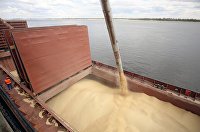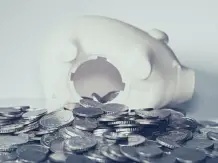MOSCOW, September 12 — PRIME, Oleg Krivoshapov. The “pivot to the East”, outlined by Vladimir Putin, implies a large-scale Asian expansion: the construction of a developed transport infrastructure, the simplification of trade interaction and settlements in national currencies, and maximum digitalization. All this will require significant investments from the state; but if the trend to limit exports continues, then more money will appear in the treasury.
“Ceiling” of contention: Russian gas drove another stake into the unity of the European Union
TURN EAST
The key topic of the Eastern Economic Forum last week was the reversal of the vector of Russia’s development in the opposite direction – from West to East. Speaking at the forum, Russian President Vladimir Putin stated that the Russian Federation is actively selling hydrocarbons abroad, despite the restrictions imposed by Western countries. If Europe refused the advantages of cheap Russian gas, then there were other countries ready to cooperate normally.
Speaking about the attempts of individual countries to unilaterally impose unfavorable rules of the game on Russia in the energy sector, the president said: “We will not supply anything outside the framework of contracts, we will not do anything imposed. Freeze, freeze wolf tail.”
Instead, the Asian direction of hydrocarbon exports is being activated. The main partner is China, which already receives Russian gas through the Power of Siberia gas pipeline. Other eastern routes are also being studied, which will allow delivering gas to countries friendly to Russia, for example, through the territory of Mongolia. And within the framework of the forum, Gazprom and China National Petroleum Corporation (CNPC) agreed to switch to payments for gas supplies in national currencies.
LOGISTICS OF A NEW TIME
But the development of supplies – both oil and gas, and everything else – is impossible without infrastructure. Currently, measures are being taken to expand the capabilities of the Eastern test site – the Baikal-Amur and Trans-Siberian Railways (BAM and Trans-Siberian). The throughput capacity of the Eastern test site is planned to be increased by 40 million tons in the coming years.
Some interesting projects are already in development. Thus, Deputy Prime Minister Marat Khusnulin recently proposed extending the M-12 Moscow-Kazan federal highway to Vladivostok with access to China, Mongolia and North Korea. He proposed to name the new route symbolically – “Eurasia”. There are also advances in other directions – the capacity of ports is increasing, a new bridge has been opened connecting Blagoveshchensk and the Chinese province of Heihe.

Corn kings: who put their paw on Ukrainian grain
However, rail transportation remains the most convenient and affordable. “For example, on the Moscow-Beijing route, this method is currently the most popular,” says Vitaly Mankevich, president of the Russian-Asian Union of Industrialists and Entrepreneurs (RASPP). However, given the significant increase in the number of export deliveries to Asia, companies do not always physically cope with the flow, he clarifies.
“Exporters may face not only a busy supply chain, but also customs control, which, accordingly, has its own restrictions on the quantity of exported products,” the expert continues. “Also, if transportation is carried out through a third country, for example, Kazakhstan, the cost of the final product may be many times higher due to the added value of the distributor”.
DIFFICULTIES OF THE TRANSITION
The problems and total congestion of Russia’s transport infrastructure are recognized by many experts. It has practically not developed in recent years, with the exception of roads and aviation, says Vasily Koltashov, head of the Center for Political Economic Studies of the New Society Institute. “For the development of transport links with Asian countries, it is necessary to change this transport infrastructure, to provide the possibility of high-speed transportation. That is, a network of high-speed railways, a new network that we do not actually have now, is necessary not only for domestic communication, but also for transit through Russia and deliveries in Russia itself. Such a transport system will facilitate Russia’s trade with Asia, including such countries as India, Iran, Pakistan.
But this requires large-scale investments from the state. This applies to both railways and maritime transport. We are talking not only about large-scale projects like the Northern Sea Route, but also about more modest tasks.
Equally significant are the problems associated with the development of business and trade. First of all, this is the verification and verification of new partner companies from those countries that Russian business is reorienting to, as well as the use of financial instruments (primarily letters of credit and insurance, which have problems, including due to sanctions).
“There are financial and infrastructural problems associated with the growth of costs for making payments, especially in non-standard currencies,” says Maksim Kuznetsov, co-chairman of the Association for the Promotion of the Turn to the East (EAPV). “Businesses often lack specialists in the state who would have experience and knowledge of specific markets in Asia, in particular – in marketing and sales organization”.
In his opinion, the creation of a national financial infrastructure will help deal with this – special companies for insuring the transportation of export cargo, including tanker oil and LNG, as well as the opening of subsidiaries of Russian banks in friendly countries, which would facilitate payments in rubles and alternative currencies. Also, according to him, it is important to digitalize certain aspects of foreign economic activity, using, among other things, software solutions that allow solving key issues of importers and exporters.
ENERGY VECTOR
The state of energy supplies can be judged from the words of Transneft President Nikolai Tokarev – he notes that the growth in oil supplies from Russia by sea in the first seven months of 2022 reached 82 million tons, while in the same period last year – only 63 million tons. And, apparently, the ESPO oil pipeline, through which oil enters the countries of the Asia-Pacific region, is fully loaded. The maximum design capacity of both its stages is 130 million tons per year.
Prime Minister Mikhail Mishustin said during the WEF that revenues from oil and gas exports from Russia have increased by almost half, which was the expected result of attempts to limit these exports. If demand for energy carriers continues to grow, a further rally in price quotations is likely, which will positively affect the Russian budget, and negatively affect the economies of importing countries.
















